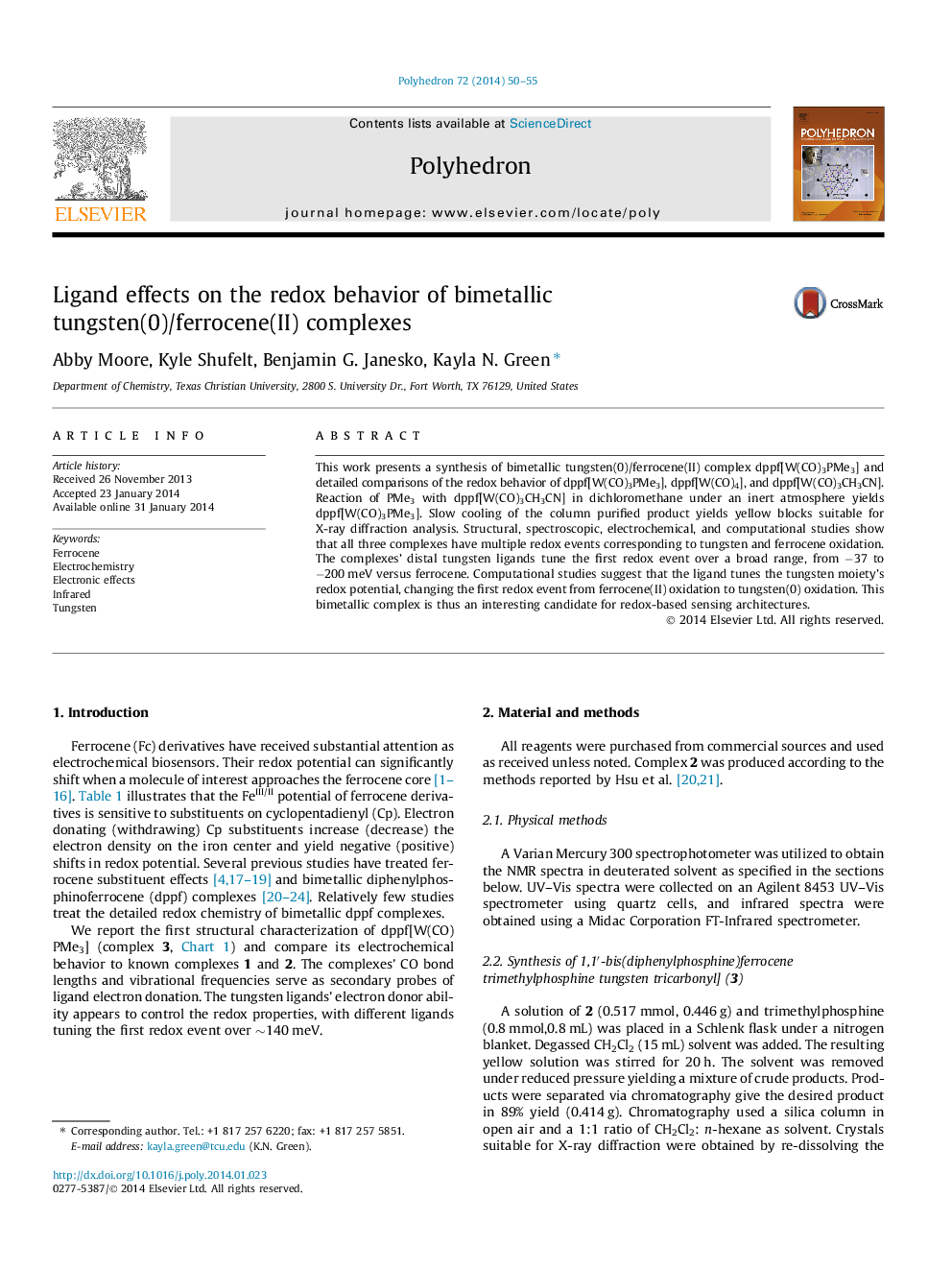| Article ID | Journal | Published Year | Pages | File Type |
|---|---|---|---|---|
| 1335401 | Polyhedron | 2014 | 6 Pages |
This work presents a synthesis of bimetallic tungsten(0)/ferrocene(II) complex dppf[W(CO)3PMe3] and detailed comparisons of the redox behavior of dppf[W(CO)3PMe3], dppf[W(CO)4], and dppf[W(CO)3CH3CN]. Reaction of PMe3 with dppf[W(CO)3CH3CN] in dichloromethane under an inert atmosphere yields dppf[W(CO)3PMe3]. Slow cooling of the column purified product yields yellow blocks suitable for X-ray diffraction analysis. Structural, spectroscopic, electrochemical, and computational studies show that all three complexes have multiple redox events corresponding to tungsten and ferrocene oxidation. The complexes’ distal tungsten ligands tune the first redox event over a broad range, from −37 to −200 meV versus ferrocene. Computational studies suggest that the ligand tunes the tungsten moiety’s redox potential, changing the first redox event from ferrocene(II) oxidation to tungsten(0) oxidation. This bimetallic complex is thus an interesting candidate for redox-based sensing architectures.
Graphical abstractThe structure of dppf[W(CO)3PMe3] is reported along with electrochemical inspection of this classic bimetallic system. The resulting cyclic voltammogram yields electronic information regarding the donor effects of ligands distal to the ferrocene component of dppf when compared to similar bimetallic systems in literature and evaluated in this study under the same conditions.Figure optionsDownload full-size imageDownload as PowerPoint slide
